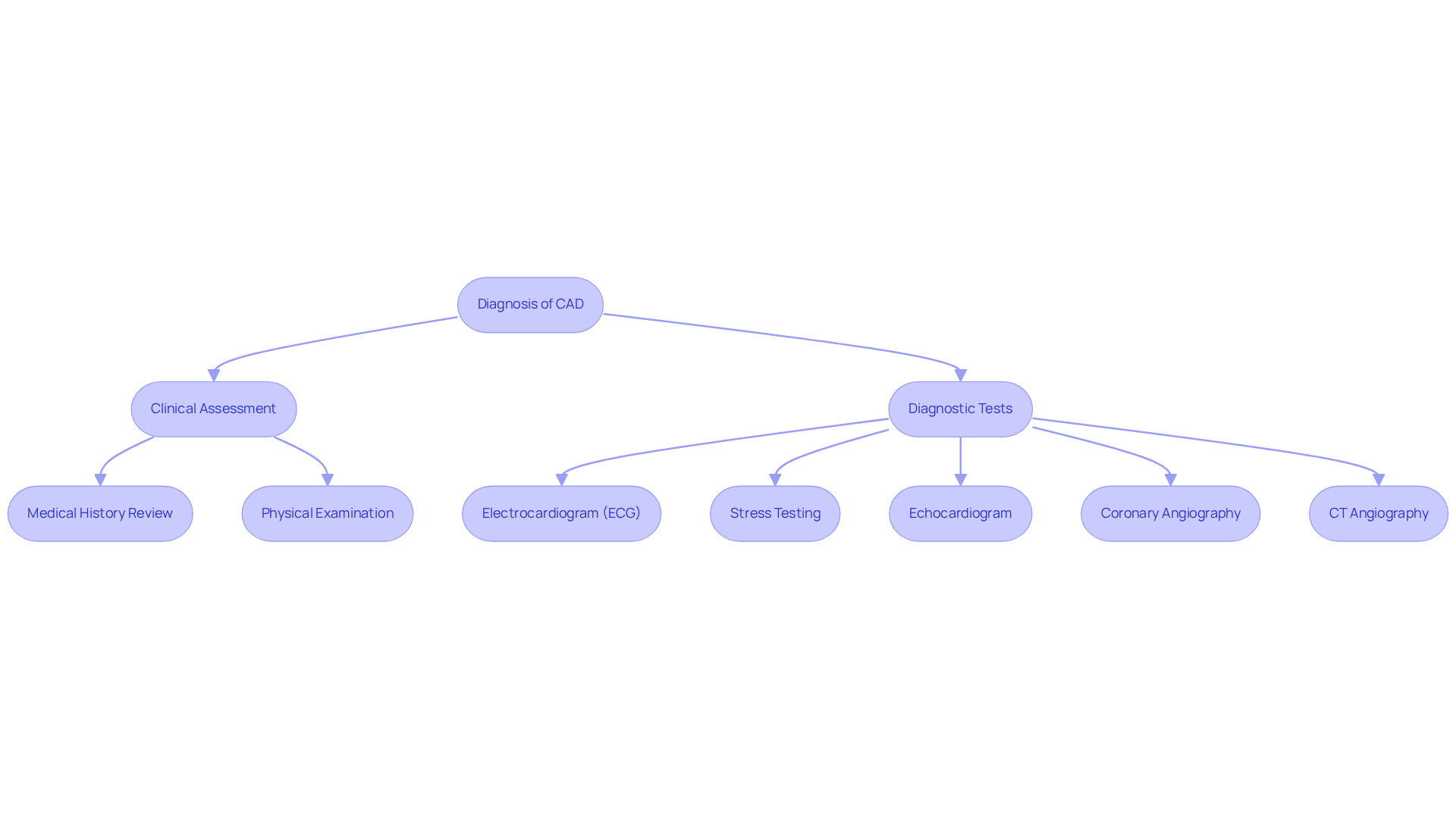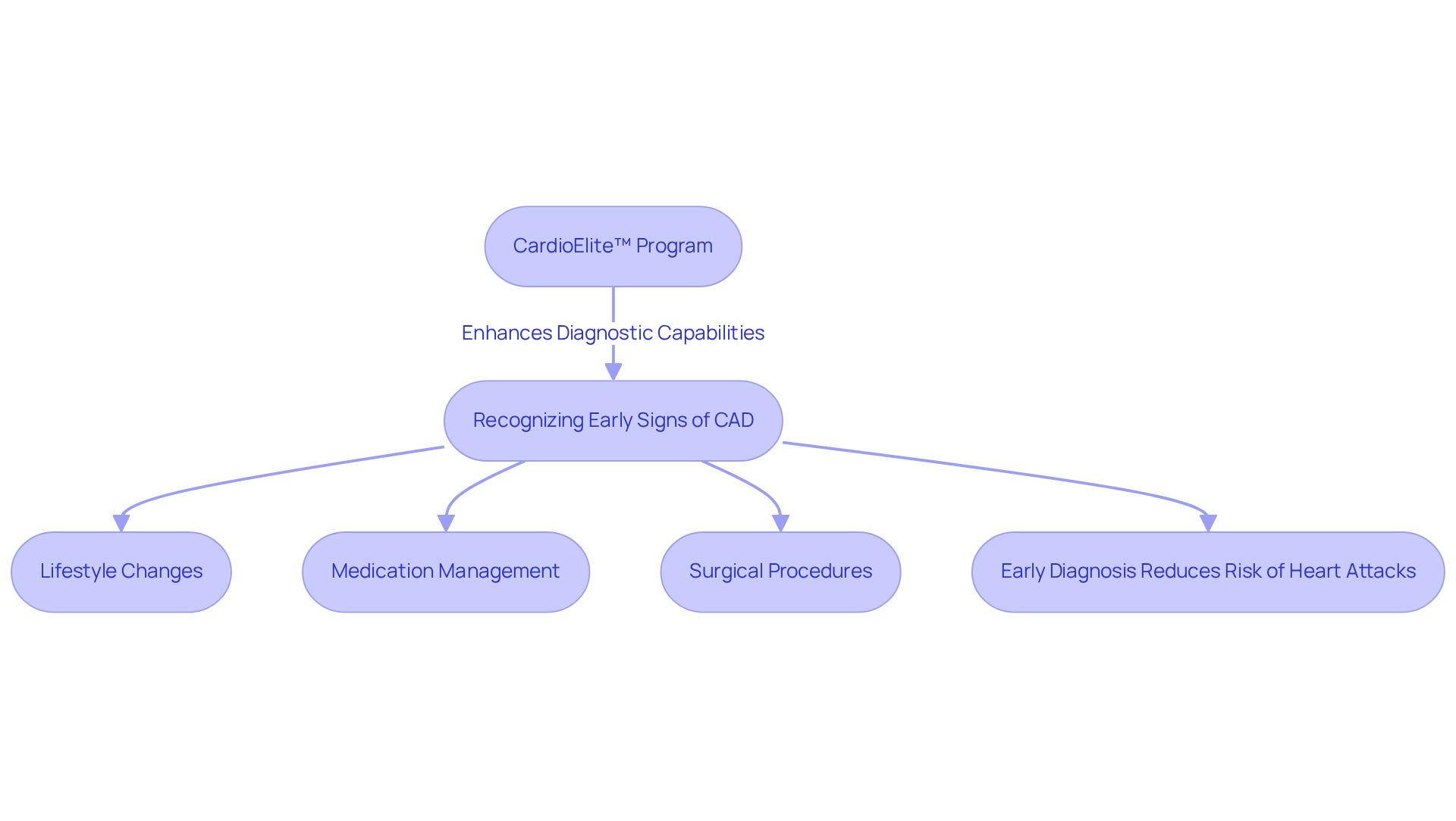


The article gently addresses the diagnosis of Coronary Artery Disease (CAD), emphasizing its importance for patients' well-being. Early diagnosis is crucial, as it opens the door to timely interventions that can significantly reduce the risk of serious complications. By utilizing various diagnostic tools and adopting a comprehensive approach to patient care, healthcare providers can offer the support patients need during this challenging time.
In addition to this, understanding the significance of early detection can ease the worries many patients feel. It’s natural to have concerns about health, but knowing that there are effective solutions available can foster a sense of hope. By reaching out for care, patients can take proactive steps towards a healthier future.
Furthermore, the article reassures readers that they are not alone in this journey. With compassionate care and a commitment to patient support, healthcare professionals are dedicated to guiding patients through their diagnosis and treatment options. This nurturing approach can make a significant difference in how patients experience their healthcare journey.
Coronary Artery Disease (CAD) is a significant health concern that affects millions of individuals, often without noticeable symptoms until serious complications occur. It’s essential for patients to understand the intricacies of CAD diagnosis, as this knowledge not only informs treatment options but also empowers them to take proactive steps in managing their heart health.
What challenges do patients face when trying to recognize symptoms and navigate the diagnostic process? How can early detection make a meaningful difference in health outcomes? Reflecting on these questions can illuminate the path to better heart health and underscore the importance of timely medical intervention.
By exploring these concerns, we can foster a supportive environment that encourages individuals to seek help and take charge of their health. Remember, you are not alone in this journey; understanding CAD is the first step towards a healthier future.
Coronary Artery Disease (CAD) is a common cardiovascular condition that can be quite concerning. It occurs when the coronary vessels become constricted or obstructed due to the buildup of atherosclerotic plaque. This plaque, which consists of fat, cholesterol, and other materials, accumulates on the artery walls, leading to decreased blood flow to the heart muscle.
Understanding the diagnosis of CAD is crucial, particularly because it can lead to serious complications such as:
It’s important to remember that the diagnosis of CAD is one of the leading causes of health issues and fatalities worldwide, especially among older adults who may experience atypical symptoms. Have you or a loved one felt unusual discomfort or pain in your chest?
If so, know that you are not alone, and there are ways to address these concerns. Seeking help and learning about the diagnosis of CAD can empower you to take control of your health. Remember, understanding your body is the first step towards better health. Reach out to a healthcare professional who can provide guidance and support. You deserve to feel safe and cared for.

The diagnosis of CAD typically involves a combination of clinical assessment and diagnostic tests, which are crucial for developing personalized treatment plans. At Amavita Heart and Vascular Health®, we emphasize thorough cardiovascular assessments to significantly lower the risk of myocardial incidents. Initially, healthcare providers will conduct a comprehensive review of your medical history and a physical examination, focusing on symptoms such as chest pain, shortness of breath, and risk factors like hypertension, diabetes, and family history.
Common diagnostic tests include:
These diagnostic tools are essential for accurately identifying the diagnosis of CAD and determining the appropriate treatment plan. Our preventive cardiology approach combines advanced risk assessment tools, lifestyle modifications, and personalized interventions. We ensure that your cardiac care is designed around your life, not just your condition. Additionally, we offer minimally invasive treatments that allow for same-day recovery, further enhancing your cardiac care experience. Remember, you are not alone in this journey; we are here to support you every step of the way.

Recognizing the early signs is vital for the diagnosis of CAD, enhancing patient outcomes and preventing serious complications. When the diagnosis of CAD is made in its initial stages, it opens the door for timely interventions that may include:
Research indicates that the diagnosis of CAD through early detection can significantly reduce the risk of heart attacks and other cardiovascular events.
For elderly patients, who often present with atypical symptoms, recognizing these signs can be particularly challenging yet essential. This is where Amavita's CardioElite™ program comes into play, acting as a clinical force multiplier. It enhances the diagnostic process by providing advanced, real-time data and 24/7 access to cardiology consultations, which supports proactive management of patient care. Furthermore, the integration of AI and AHA certification within CardioElite™ strengthens its comprehensive management capabilities.
By implementing regular screening and awareness initiatives, alongside the extensive support offered by CardioElite™, healthcare providers can ensure that at-risk populations receive the evaluations and treatments they need. This approach not only enhances their quality of life and longevity but also addresses the high rates of cardiovascular readmissions commonly associated with skilled nursing facilities. Remember, taking these steps is not just about managing health; it’s about fostering a supportive environment where patients feel valued and cared for.

Understanding the diagnosis of Coronary Artery Disease (CAD) is essential for both patients and healthcare providers. This understanding serves as a pivotal step in managing a condition that can lead to severe health complications. By recognizing the signs and symptoms early, individuals can take proactive measures to safeguard their heart health, making informed decisions that can significantly improve their quality of life.
The article highlights the intricate process of diagnosing CAD, emphasizing the importance of thorough clinical assessments and advanced diagnostic tests such as:
Furthermore, it underscores the critical role of early detection, which can lead to timely interventions and reduce the risk of serious cardiovascular events. Programs like Amavita's CardioElite™ are instrumental in enhancing patient care, providing real-time data and support that empower patients on their health journey.
Ultimately, understanding and addressing CAD is not just about treating a disease; it is about fostering a supportive environment that prioritizes heart health. Individuals are encouraged to engage in regular screenings and stay informed about their cardiovascular health. By doing so, they can take charge of their well-being and ensure they receive the necessary evaluations and treatments, paving the way for a healthier future.
What is Coronary Artery Disease (CAD)?
Coronary Artery Disease (CAD) is a cardiovascular condition characterized by the constriction or obstruction of coronary vessels due to the buildup of atherosclerotic plaque, which consists of fat, cholesterol, and other materials.
What are the symptoms of CAD?
Symptoms of CAD can include angina (chest pain), but it may also lead to other serious complications such as heart attacks and sudden cardiac death.
Why is understanding CAD important?
Understanding CAD is crucial because it is one of the leading causes of health issues and fatalities worldwide, particularly among older adults who may experience atypical symptoms.
What should I do if I experience unusual discomfort or pain in my chest?
If you or a loved one feels unusual discomfort or pain in the chest, it is important to seek help from a healthcare professional who can provide guidance and support regarding CAD.
How can I take control of my health regarding CAD?
Learning about the diagnosis and implications of CAD can empower you to take control of your health. Seeking help and understanding your body is the first step towards better health.